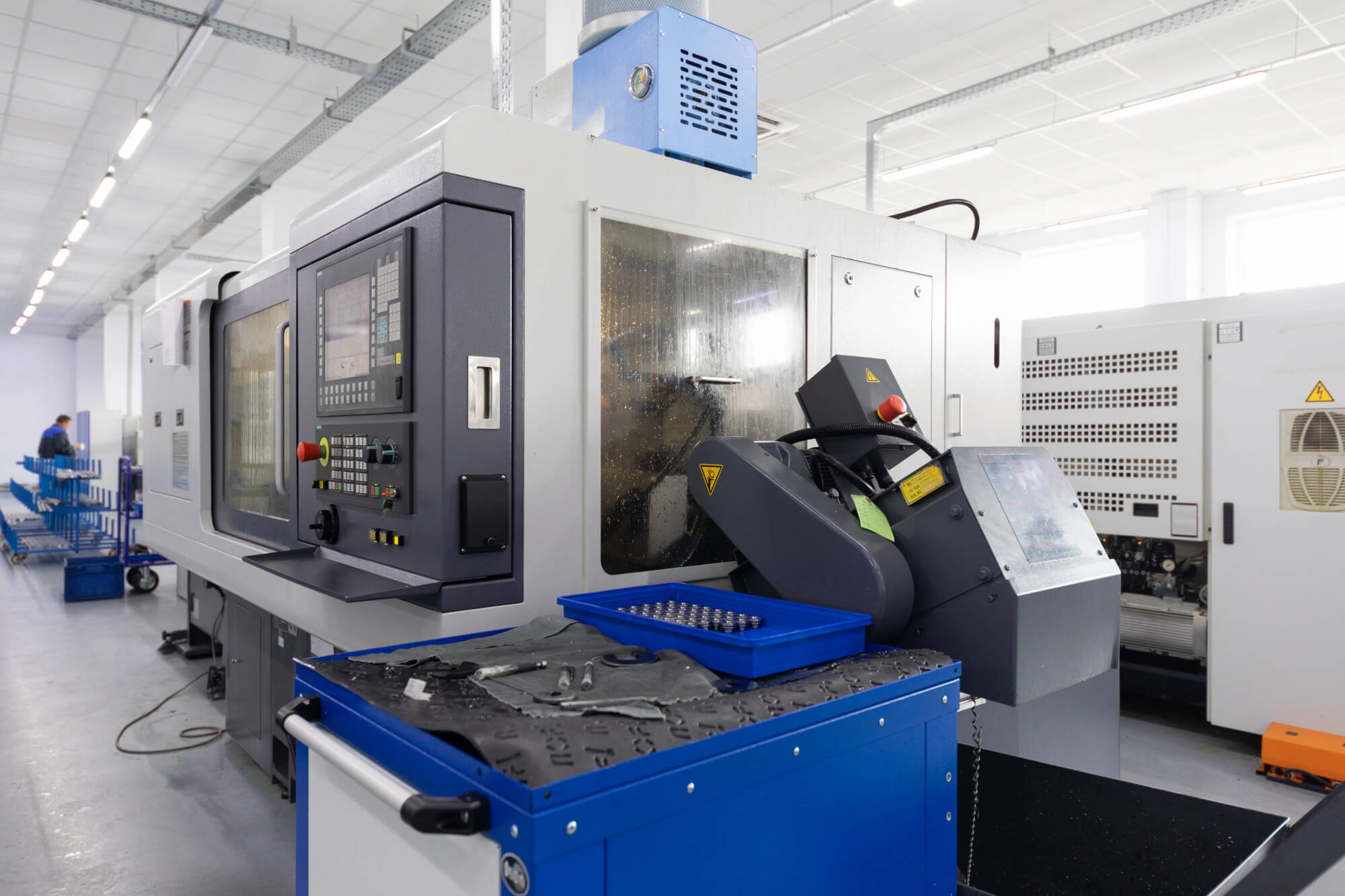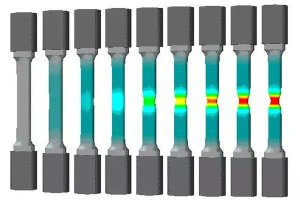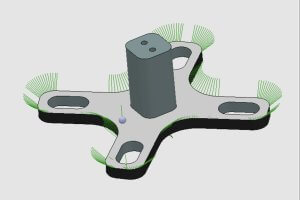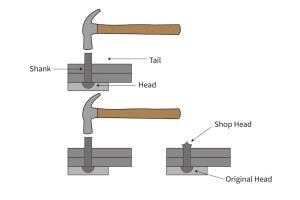Aluminum alloys, particularly 7075 and 7050, are widely used in the aerospace industry due to their high strength-to-weight ratio, excellent corrosion resistance, and good machinability. However, when it comes to CNC machining, especially for large thin-walled structures, these materials present unique challenges, particularly in terms of deformation during the machining process. This article explores the differences between 7075 and 7050 aluminum alloys in CNC machining, focusing on the factors that influence deformation and strategies to minimize it.
Overview of 7075 and 7050 Aluminum Alloys
Both 7075 and 7050 aluminum alloys belong to the 7xxx series, which are zinc-based alloys. These materials are known for their high strength, making them ideal for critical aerospace applications. However, they have distinct properties that influence their behavior during machining.
7075 Aluminum Alloy:
- Composition: Primarily aluminum, zinc, magnesium, and copper.
- Strength: High strength, comparable to some steels, making it suitable for high-stress applications.
- Corrosion Resistance: Moderately resistant to corrosion, but typically treated with anodizing or coating for improved durability.
- Machinability: Good machinability, but prone to stress corrosion cracking if not properly treated.
7050 Aluminum Alloy:
- Composition: Similar to 7075 but with additional elements like zirconium, which improve toughness and resistance to stress corrosion cracking.
- Strength: Slightly lower than 7075 but with better fracture toughness and resistance to fatigue.
- Corrosion Resistance: Superior to 7075, especially in thick sections, making it ideal for aircraft structures.
- Machinability: More challenging to machine due to its higher hardness and toughness.
Factors Influencing Deformation in CNC Machining
Deformation during CNC machining of large thin-walled aluminum parts is influenced by several factors, including material properties, residual stress, cutting forces, heat generation, and fixturing methods.
- Material Properties and Structure:
- Both 7075 and 7050 alloys have high strength, but their elastic modulus is lower than steel, leading to higher springback during machining. The inherent rigidity of the material is crucial in maintaining dimensional stability.
- Residual Stress:
- Residual stresses from the manufacturing process, such as rolling or extrusion, can lead to significant deformation when material is removed. The balance of internal stresses is disrupted during machining, causing the part to warp or distort.
- Cutting Forces:
- High cutting forces can induce elastic deformation, especially in thin-walled sections. If the force exceeds the material’s yield strength, permanent deformation occurs.
- Cutting Heat:
- Heat generated during machining can cause thermal expansion, leading to differential expansion within the material. This is particularly problematic for aluminum due to its high coefficient of thermal expansion.
- Fixturing and Clamping:
- Improper fixturing can lead to additional stresses being introduced during machining. Ensuring that the part is securely and evenly clamped is essential to minimize deformation.
Minimizing Deformation: Best Practices
To minimize deformation during the CNC machining of 7075 and 7050 aluminum alloys, several strategies can be employed:
- Use of Pre-Stretched Material:
- Using pre-stretched aluminum plates can significantly reduce residual stress. Pre-stretching aligns the material’s internal stresses, reducing the likelihood of warping during machining.
- Optimizing Cutting Parameters:
- Careful selection of cutting speed, feed rate, and depth of cut can help reduce the forces and heat generated during machining. For example, using higher cutting speeds and lower feed rates can reduce the cutting forces and heat input, minimizing deformation.
- Multiple Roughing and Finishing Passes:
- Instead of removing a large amount of material in a single pass, multiple roughing passes followed by a finishing pass can help maintain dimensional stability. This allows stresses to be relieved gradually.
- Controlled Machining Environment:
- Maintaining a controlled temperature environment during machining can help minimize thermal expansion. Using flood cooling or air blast cooling can also help manage heat generation.
- Advanced Fixturing Techniques:
- Using advanced fixturing techniques, such as vacuum fixtures or soft jaws, can provide even clamping pressure and reduce the introduction of additional stresses. Fixturing should be designed to minimize deflection and allow for stress relief during machining.
- Toolpath Optimization:
- Optimizing the toolpath to minimize tool engagement and reduce the impact on thin sections is critical. For example, using a spiral toolpath or trochoidal milling can help distribute cutting forces more evenly and reduce the risk of deformation.
- Stress Relieving Post-Machining:
- In some cases, stress-relieving heat treatments post-machining can be beneficial. This process involves heating the part to a specific temperature to allow internal stresses to be relieved, reducing the likelihood of deformation over time.
Case Study: CNC Machining of a Thin-Walled 7050 Aluminum Component
To illustrate these principles, consider a case study involving the CNC machining of a thin-walled 7050 aluminum aircraft component. The component, with dimensions of 1,500 mm x 800 mm x 5 mm, required tight dimensional tolerances and minimal deformation.
Challenges:
- High risk of warping due to the large size and thin walls.
- Significant residual stresses in the initial material.
- Need to maintain a smooth surface finish to avoid stress concentration points.
Solution:
- Material Selection: Pre-stretched 7050 aluminum was chosen to minimize residual stress.
- Machining Strategy: A roughing strategy with multiple passes was employed, gradually removing material while maintaining the structural integrity of the component.
- Cutting Parameters: High cutting speed and moderate feed rates were selected to reduce cutting forces.
- Fixturing: A custom vacuum fixture was designed to hold the component flat during machining, reducing clamping-induced stress.
- Cooling: Flood cooling was used to control the temperature and minimize thermal expansion.
Outcome:
- The final component met all dimensional tolerances with minimal warping.
- Surface finish requirements were achieved, ensuring the component’s structural integrity.
Comparing 7075 and 7050 in CNC Machining
When comparing 7075 and 7050 aluminum alloys in CNC machining, the choice depends on the specific requirements of the application.
| Property | 7075 Aluminum Alloy | 7050 Aluminum Alloy |
|---|---|---|
| Strength | Higher | Slightly lower |
| Toughness | Lower | Higher |
| Corrosion Resistance | Moderate | Superior |
| Machinability | Good | More challenging |
| Stress Corrosion Cracking | More prone | Less prone |
| Application Suitability | High-stress applications | Aerospace structures, thick sections |
| Deformation Risk in CNC | Moderate | Lower |
In general, 7075 is preferred for applications requiring maximum strength, while 7050 is better suited for components requiring high toughness and corrosion resistance, particularly in thick sections.
Conclusion
CNC machining of 7075 and 7050 aluminum alloys requires careful consideration of various factors to minimize deformation, particularly in large thin-walled structures. By understanding the properties of these alloys and applying best practices in machining, manufacturers can achieve high precision and structural integrity in their components.
For procurement professionals and CNC machinists alike, choosing the right material and machining strategy is critical to the success of aerospace and other high-performance applications. With the right approach, both 7075 and 7050 aluminum alloys can be effectively machined to meet the most demanding specifications.
Other Articles You Might Enjoy
- Overcoming Deformation Issues in CNC Machining of Aerospace Aluminum Parts
In the aerospace industry, large aluminum alloy thin-wall structures are prized for their lightweight and high-strength properties. However, machining these components presents a set of unique challenges, primarily due to…
- Simulation Analysis of Deformation in Aluminum Alloy Frame Parts during CNC Machining
Introduction Aluminum alloy frame parts are like the unsung heroes of the aerospace industry. These components, found in aircraft frames, beams, and bulkheads, are critical for ensuring structural integrity and…
- CNC Machining Materials: Acrylic vs. Polycarbonate for Transparent Components
CNC Machining: An Introduction and the Importance of Material Type Computer Numerical Control (CNC) machining is a manufacturing process where pre-programmed computer software dictates the movement of factory tools and…
- The main factors of workpiece deformation in CNC machining
With the rapid development of science and technology, many fields have already reached a near-saturated state. The market competition in the field of CNC machining is becoming more and more…
- Mastering Aluminum Frame CNC Machining Parts: Overcoming Deformation from Residual Stress
Aluminum frames are essential components in aerospace, replacing traditional assembly structures with large integral structures. These frames, such as the X3280 frame for helicopters, have significantly improved the manufacturing cycle,…
- Precision CNC Machining of Steel: High-Volume Production
Precision CNC Machining and High-Volume Production As an integral part of modern manufacturing processes, Precision Computer Numerical Control (CNC) machining brings about unmatched accuracy and consistency in the production of…









